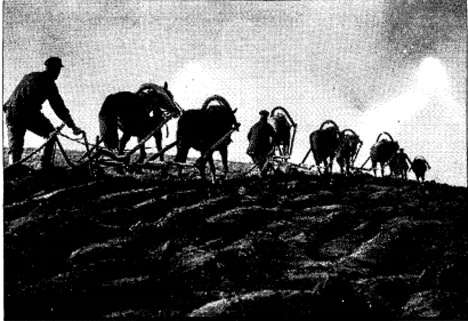Parallax Views

The image at left looks like a typical example of New Deal photography. It could be a classic still by Dorothea Lange or George W. Ackerman, or a frame from one of Pare Lorenz's federal propaganda films, such as The Plow that Broke the Plains. In fact, it's from a parallel school of photography: the Socialist Realist school that dominated imagery in Stalinist Russia at the very time that the New Deal school was flourishing.
This particular shot, Commune Dawn, Karelia Region, was snapped by Arkady Shaikhet in the 1930s; it's one of 200 photos in a remarkable exhibit, "Propaganda and Dreams: Photographing the USSR and the US," curated by Leah Bendavid-Val and most recently displayed in Washington, D.C. Bendavid-Val was struck by how much such photographs had in common, given the vastly different systems that generated them. Her exhibit pairs many similar images--the portrayal of rural continuity, a fascination with hydroelectric projects, the narrative of a communal struggle against poverty--in deliberate provocation.
The systems that created these photos may have been different, but, as Bendavid-Val has noted, the ideas behind the images were similar: The state was the enemy of poverty; heavy industry was its tool in bringing change to the land and hope to its people. Turns out that the modernist state, East and West, had an Ur-tale; this exhibit reveals it.


Show Comments (1)